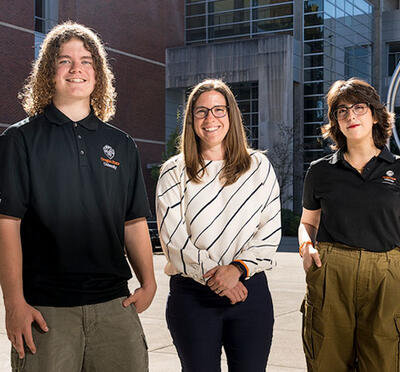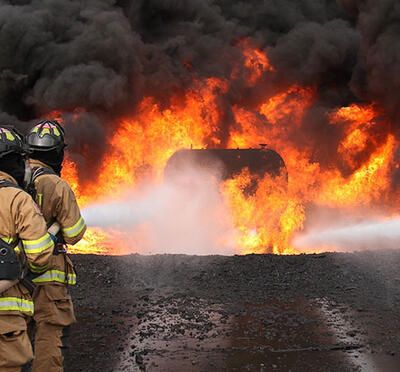The next time you hop on a subway or ride a train between terminals at an airport, give a nod to engineers like Chris Tyndall, B.S. civil engineering ’09. A design manager for Kiewit Corp.’s infrastructure engineering design group, Tyndall manages what he calls the “chaotic process” of combining electrical, mechanical, and communications systems in mass transit projects.
“My time is split roughly 50-50 between solving technical challenges and managing people and processes. Much of what I do is relatively intangible — you won’t find my name on many design drawings — but I enjoy bringing order and efficiency to the design,” Tyndall said.
Systems integration is critical. When a fire alarm goes off in a subway station, for example, lights and communications need to be triggered and commuter gates need to open so people can evacuate quickly and safely. The work of combining systems can mean comparing various CAD (computer-aided design) drawings — maybe some old-fashioned paper schematics, too — and devising solutions for any conflicts or discrepancies.
“I might find that an HVAC (heating, ventilation, and air conditioning) unit is currently designed to be right on top of an electrical transformer,” Tyndall said. “Or that a wiring diagram shows how a network is configured but not where it ends up.”
Tyndall has worked on some of the biggest jobs in the country, such as the $2 billion Automated People Mover at Los Angeles International Airport. Due to be completed in 2023, the system will simultaneously deploy six trains that start and stop only minutes apart over a 2.25-mile track.
Currently, he is working on renovations for the Metro transit system in Washington, D.C. Much of its infrastructure reflects outmoded standards of the 1970s and 1980s, and age is taking its toll on platforms and other facilities.
When Tyndall graduated in 2009, just as the Great Recession was giving way to a jobless recovery, he went to work for one of the few companies that were hiring, Mass. Electric Construction Co. A Kiewit subsidiary, its focus is on the electrical side of transit projects, such as light rail, commuter rail, and subways. It was all new to him, and it wasn’t anything like the career he’d imagined as a student.
“You think about the examples you study in classes: bridges, highways, skyscrapers. And you think those are what you’d like to do in your career,” he said. “But there are so many niches that people don’t think about — and niches within niches. Here I am, 12 years later, and I wouldn’t want to do anything else.”



